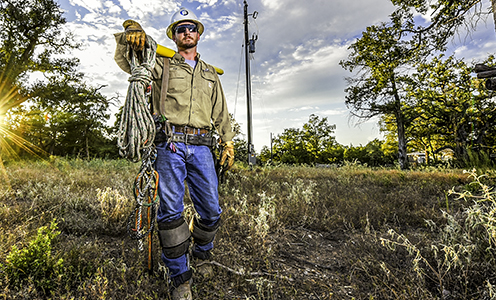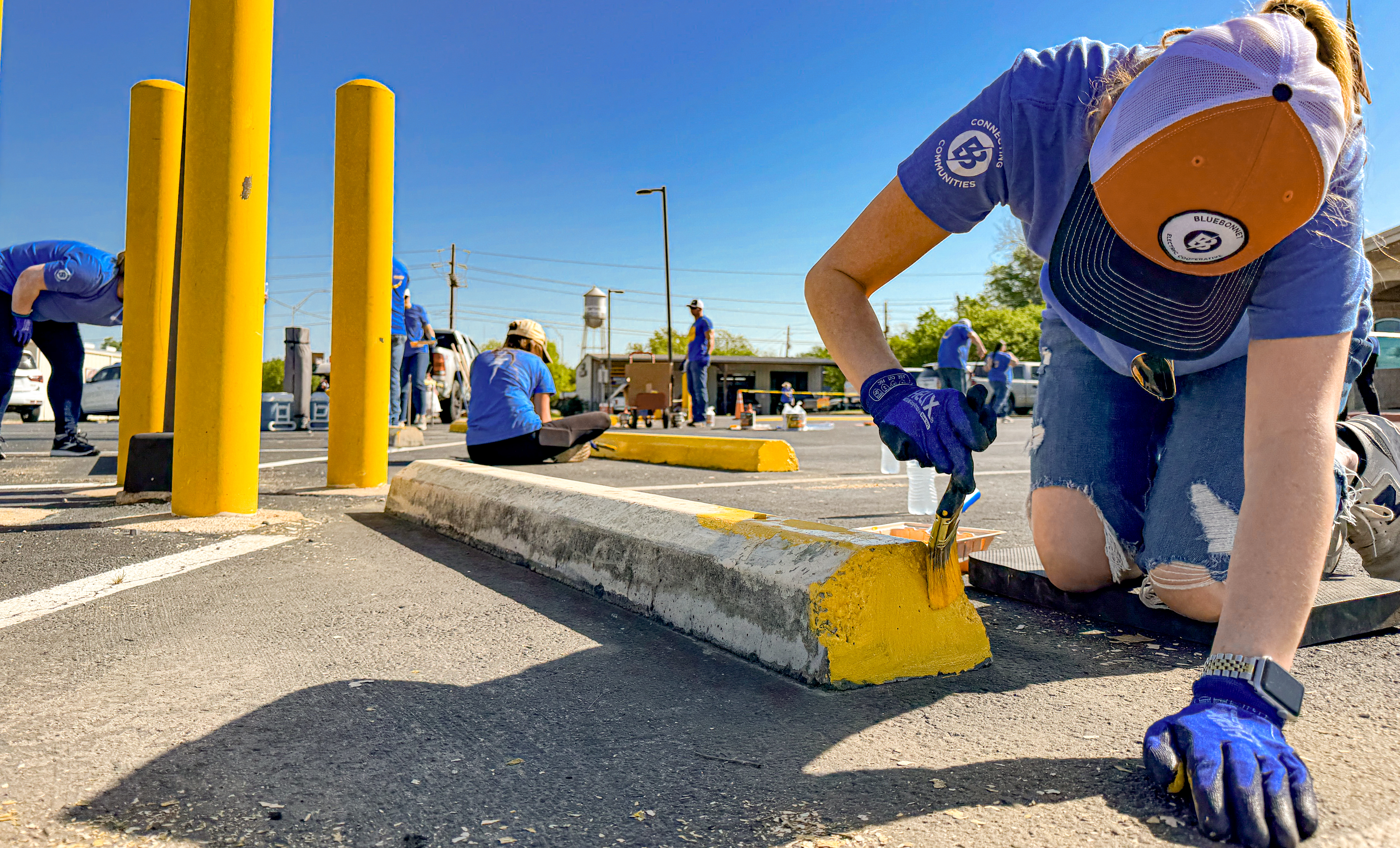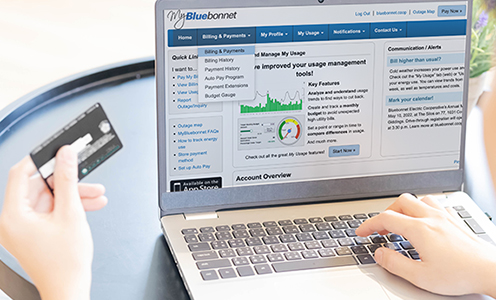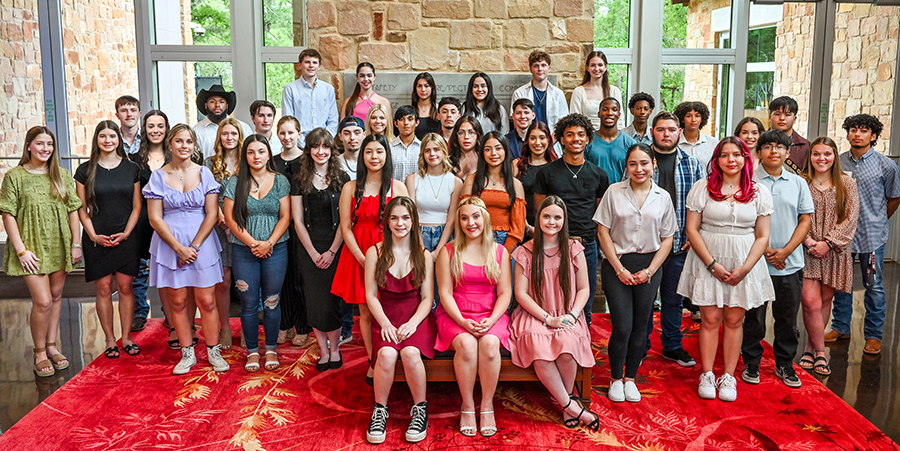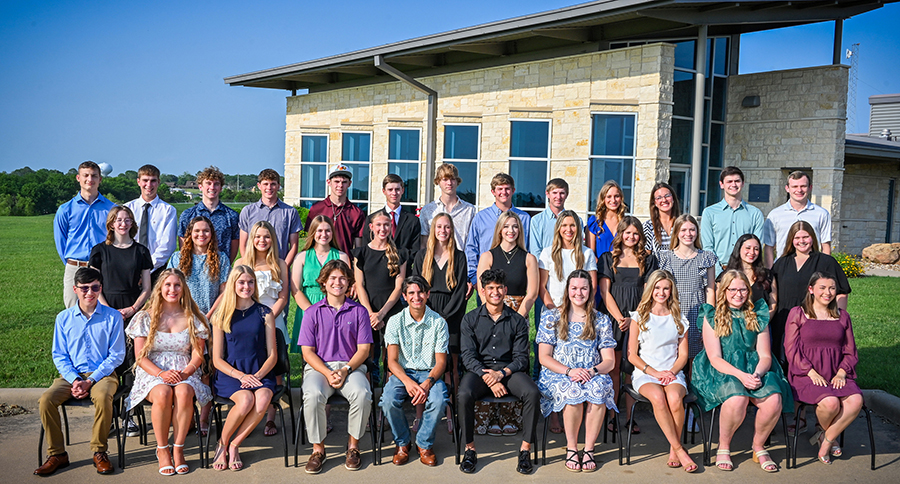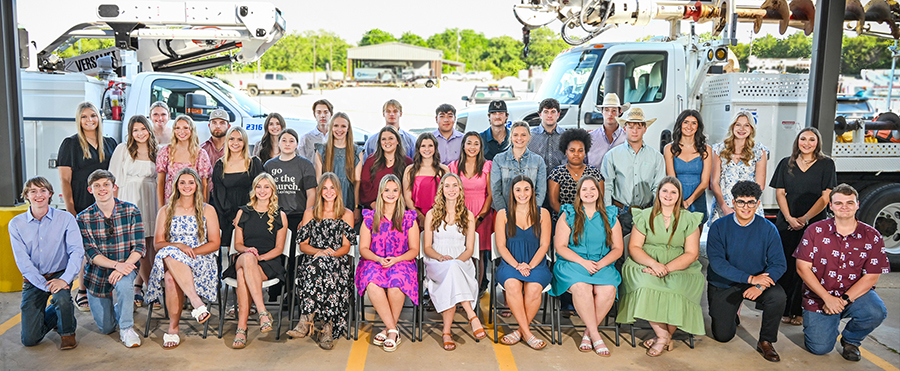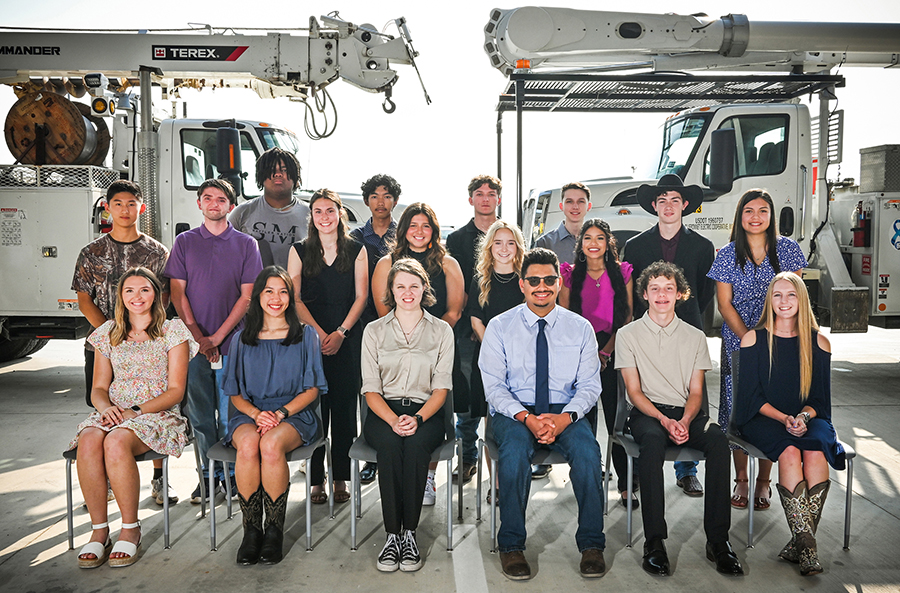The cooperative way
Recent news
Three graduates began Bluebonnet careers as interns; two employees get advanced technical training certifications
By Connie Juarez
Fourteen apprentice lineworker graduates at Bluebonnet Electric Cooperative are now prepared to join the skilled team of journeymen who provide reliable service across the cooperative’s 3,800-square-mile service area.
Three of those graduates began as lineworker interns at Bluebonnet, completing a six-month training program before beginning years of apprentice courses and on-the-job learning.

In addition to the lineworker graduates, Tristin Lagrone, a substation technician, received his certification from the U.S. Department of Labor. Dillon Stavinoha, a control center operator, completed a 10-month program and proficiency exam to receive a certification as a system operator.
Each program has unique requirements for study, testing, training and work experience. Bluebonnet's lineworker apprentice program requires 8,000 hours of on-the-job training, along with 672 hours of technical instruction, typically completed over four years. Program graduates receive certification as lineworkers from the Department of Labor.
For John Courtney, an apprentice graduate, the program offered a stable career with room for growth.
“I earned something I can really be proud of, something that’s going to help me build a better future,” said Courtney, who is based in Brenham. “If anyone’s thinking about the program, I’d say go for it and give it 100%. It’s going to be a challenge, but it definitely pays off.”
Lagrone said he was inspired by the lineworkers he saw as a child.

“I grew up in Lexington, and I can remember as a kid watching Randall Bownds and other linemen come out during storms and outages to restore power,” said Lagrone, who is based in Giddings. “I thought that was pretty cool that they could get the lights back on.” Bownds is an assistant field superintendent also working out of Giddings.
The best parts of his job, Lagrone said, are the variety each
day brings and the satisfaction of helping his community.
Several apprentice graduates spoke about how much the program has helped them grow personally, emphasizing that the skills they’ve developed go beyond just their work.
“The leadership skills I’ve gained through the program have truly changed me as a person. I apply them every day — whether it’s in my role as a husband and father, or by stepping up to give my time in the community,” said Thurston Bennett, who is based in Bastrop.
With the addition of this year’s group, 153 Bluebonnet lineworker apprentices have graduated from the program since it began in 2004.
In addition to hundreds of classroom hours, apprentices gain extensive experience in the field, learning skills such as building overhead and underground power lines, restoring power during outages, maintaining equipment, and installing and repairing meters.
Paul Herzog, superintendent in Giddings, discussed the value of the program.
“This program gives local people a chance to get into a rewarding career. It’s more than just a job — it’s about building a future, learning skills that’ll last a lifetime,” Herzog said. “By offering these opportunities, we’re not only making sure our community has the right people to keep things running smoothly, but we’re also building the next generation to serve and support the community for years to come.”
The newest Bluebonnet apprentice graduates, in addition to Courtney and Bennett, are Dustin Barker, Jordan “J.D.” Boecker, Stephen Braneff, Colton Burch, Kyle Jenke, David Martin, Colton Matthijetz, Timmy Medack, Dior Smith, Trey Townsend, Preston Vaughn and Brad Young.
Smith, Townsend and Vaughn began their careers as lineworker interns.
The intern program, which started in 2018, provides six months of technical instruction in line work. To advance into the apprentice program, participants must also obtain a power-pole climbing certification and a commercial driver’s license.
Learn more about Bluebonnet’s lineworker intern and apprenticeship programs at bluebonnet.coop/careers.
Lineworker Appreciation Day is April 14
Electric cooperatives across America will observe April 14 as National Lineworker Appreciation Day. Take time to recognize the hard work and dedication of Bluebonnet Electric Cooperative's lineworkers by visiting our social media pages on that day to see a special video tribute to our lineworkers. Not only are they on call to work — any time, any day of the year — to restore electricity during outages, but they install, repair, replace and maintain the cooperative's electrical equipment.
Spring officially begins March 20, bringing new opportunities to save electricity and money. Here are some ways to get started on spring energy savings.
CLEAR THE AIR
Open windows to let fresh air circulate.
COOK OUTSIDE
Soak in the sunshine by grilling or smoking meals. Or toss a salad and make sandwiches to enjoy outdoors.
SEARCH AND SEAL
Cracks and gaps let conditioned air escape. Caulk and weather strip to seal leaks, especially around windows and doors.
LET THE LIGHT IN
Open blinds and curtains and turn off lights to save electricity.
BE FAN FRIENDLY
Set ceiling fans to turn counterclockwise for cooling. Remember, fans cool people, not rooms, so turn them off when you leave.
ADJUST THE THERMOSTAT
Set your thermostat for the milder months ahead. Consider turning it off entirely during mild weather or scheduling cooling before you arrive home if you have a smart thermostat.
TUNE UP YOUR SYSTEM
Have an HVAC technician inspect your system before the peak cooling season.
UNPLUG AND SAVE
Disconnect devices you don’t use regularly. Plugged-in devices draw power even when not in use. A smart power strip makes it easy to turn off multiple items at once.
MOVE OUTDOORS
Trade lights, TVs, computers and devices for outside activities.
Download this story as it appeared in Texas Co-op Power magazine
Cold weather happens, even if it was 80 degrees yesterday. Save electricity and save money with a few simple suggestions from Bluebonnet Electric Cooperative.
LOWER YOUR WATER HEATER TEMPERATURE
The U.S. Department of Energy recommends using the warm setting (120 degrees) on your water heater during the winter months. Plus, consider washing clothes in cold water.
TURN DOWN THE THERMOSTAT
You can save about 3% on your electric bill for every degree you drop the temperature.
SWITCH THE DIRECTION CEILING FANS TURN
If your fan has the capability, make the blades turn clockwise. This pulls cool air toward the ceiling and pushes warm air down.
UPGRADE YOUR FIREPLACE
Add an insert or replace your fireplace with an energy-efficient model.
LET THE SUN IN
Allow natural warmth in through the windows, especially south-facing windows.
USE SPACE HEATERS SELECTIVELY
You can save electricity by heating only the room you are in.
WEAR WARM CLOTHES
It may seem obvious, but putting on an extra sweater and adding wool socks with your slippers will let you lower your thermostat temperature.
LIMIT THE USE OF EXHAUST FANS
They suck out all the indoor air your heater has worked so hard to warm.
ELIMINATE DRAFTS
Cold winter air can sneak in around windows, doors and even electrical outlets. Weather stripping, insulation and insulated curtains can help keep warm air in.
Download this story as it appeared in Texas Co-op Power magazine

